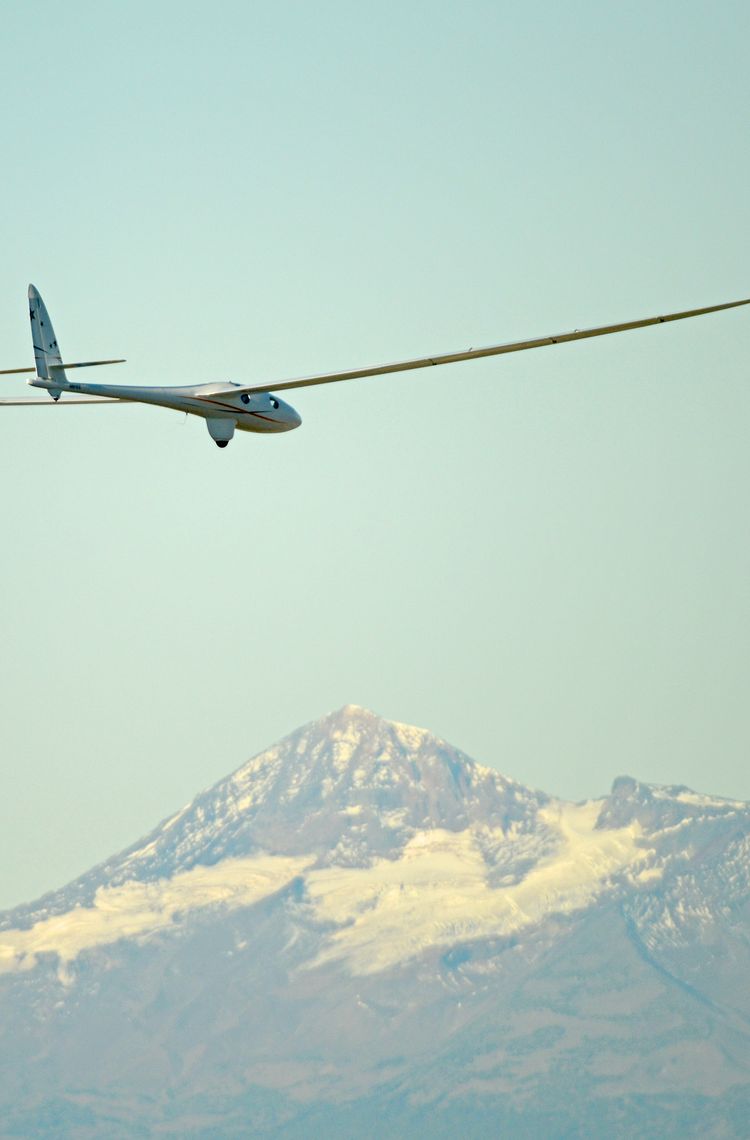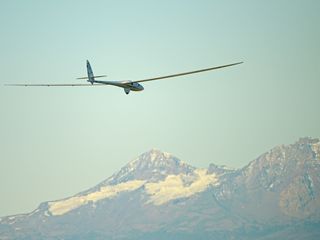Pressurized glider reaches new high altitude on journey to edge of space
Airbus Perlan Mission II, an initiative to fly a glider without an engine to the edge of space to collect ground-breaking insights on high-altitude flight, weather, and climate change, returned to flight this week at its U.S. headquarters at the Minden-Tahoe Airport. Perlan Project Pilots Jim Payne and Miguel Iturmendi soared the pressurized glider to its highest altitude to date, reaching 30,615 feet.
The Perlan 2 will spend spring soaring in the rising wind currents – called mountain waves – in the skies above the Sierra Nevada, before deploying in May to Argentina for its second year of flight operations in Patagonia. “This past year our team gained invaluable insight and experience from flying the glider in
and around the Andes Mountains,” said Ed Warnock, CEO of The Perlan Project. “Using that information, we’ve made improvements to the aircraft that will help us have even greater success this year, first in Nevada and later in Argentina, if the wave and weather conditions are optimal.”
To reach the altitudes that will enable the aircraft to conduct its unique research, the team is searching for elusive “stratospheric mountain waves,” which only occur a few places on earth – such as Patagonia – and a few weeks out of the year. “We’re thrilled that the Perlan 2 glider is back in the air for another season of exploration, because this endeavor inspires us all to expand the limits of our thinking,” said Allan McArtor, Chairman of Airbus Americas. “In today’s competitive environment, innovation can’t just be a buzzword, and Airbus Perlan Mission II is just one example of how we’re turning ideas into action.” The Perlan Project‘s all-volunteer team has recently updated the experimental Perlan 2 glider, which features a pressurized cockpit, enhanced avionics and life support systems.
Key improvements include:
- Heating for critical items – Based on data collected during the first season of operations in Argentina, the team has installed additional heating to ensure that mission-critical systems such as the battery and the air and oxygen regulators are unaffected by the extreme cold temperatures at high altitude.
- Control stick improvements – Modifications to the control sticks have been made to improve the pilot-to-aircraft interface.
- Flight simulator updates – The team’s flight simulator has been upgraded to improve pilot training in preparation for high altitude flights.
For more information about Airbus Perlan Mission II, please go to www.perlanproject.org. Press Kit with images, infographic, fact sheet, and video is available at: http://bit.ly/perlanpress.
About Airbus
Airbus is a global leader in aeronautics, space and related services. In 2016, it generated revenues of € 67 billion and employed a workforce of around 134,000. Airbus offers the most comprehensive range of passenger airliners from 100 to more than 600 seats. Airbus is also a European leader providing tanker, combat, transport and mission aircraft, as well as Europe’s number one space enterprise and the world’s second largest space business. In helicopters, Airbus provides the most efficient civil and military rotorcraft solutions worldwide.
About Airbus Perlan Mission II
Airbus Perlan Mission II is an initiative to fly an engineless glider to the edge of space, higher than any other winged aircraft has operated in level, controlled flight, to open up a world of new discoveries related to highaltitude flight, weather and climate change. This historic endeavor is the culmination of decades of research and engineering innovation, and the work of a tireless international team of aviators and scientists who volunteer their time and expertise for the non-profit Perlan Project. The project is supported by Airbus Group and a group of other sponsors that includes Weather Extreme Ltd., United Technologies and BRS Aerospace.
Perlan’s other sponsors:
United Technologies
Weather Extreme Ltd.
BRS Aerospace
Equipment, service and institutional donors:
Aero Club Lago Argentino
AGM Container Controls
ANAC
Automated Metal Products
Argentina Air Force Directorate-General of
Research and Development
Biomarine Rebreathers
Bonehead Composites
Cobra Trailer
Community Foundation of Western Nevada
Clouddancers
DeLorme inReach
Dragonfly Energy
EANA
Epic Aircraft
Garmin
Intel
Iridium Communications Inc.
Kiloyankeepapa
Laviasa
Leading Edge Jet Center
LX Nav
Miller Nash Graham & Dunn
MH Aviation Oxygen Systems
Omni
Pro-Tint
RDD
Sandia Aerospace
Silicon Valley Community Foundation
SIMCOM
SoaringNV
Soaring Society of America
Sports Aviation Foundation
Trig Avionics
University of Washington Applied Physics
Laboratory
Whelen Engineering

